Breaking Out of the Box:
A Campaign for the Future of School
New Classrooms is launching a $49 million, three-year capital campaign that will demonstrate what the future of school can be while simultaneously addressing profound learning losses in math.
Shaping the Future of Schooling
Education makes all the difference in the life trajectory of a young person. It opens their minds, reveals their talents, drives their future economic mobility, and provides them with tools to participate in our democracy.
For over a century, the U.S. education system has been based on the model of a single teacher instructing a group of same-age students, with instruction primarily being delivered through a textbook. In the late 19th century, this approach was considered the most efficient way of supplying a culturally-assimilated, factory-ready workforce that was able to perform repetitive tasks, follow directions, and apply basic numeracy and literacy skills.
This system proved incredibly effective in scaling a one-size-fits-all approach to schooling to millions of young people. It was one of our nation’s most impressive attempts at providing the opportunity that education affords. But the quality of that education varied widely — particularly in communities of color and in lower income communities. The American economy has also diversified incredibly over the past hundred years, which means the skills needed to join the workforce have evolved.
In recent years, COVID-19 unleashed multiple new challenges for schools, including the need to address its profound impact on students’ academic and mental health. The burden of managing these additional pressures has largely fallen on the backs of teachers, and many are leaving the profession given how unsustainable their roles have become.
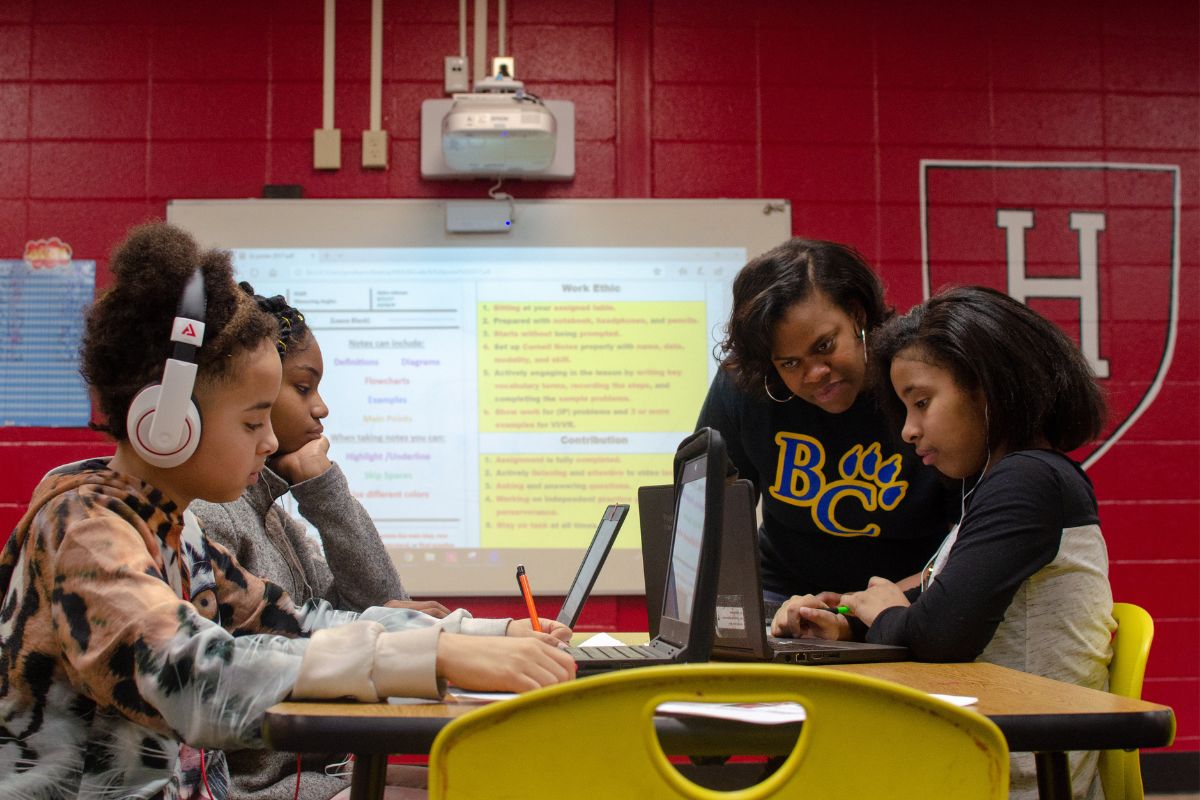

The effectiveness of a one-size-fits-all education has reached its limit. There are undoubtedly better ways of educating our nation’s youth in the 21st century. Learning today must be more personalized, more reflective of the science of learning, more sustainable for educators, more reflective of what local communities are seeking, and (most importantly) more impactful for students. Those new approaches require organizations with the vision and capacity to bring transformative innovations to life.
Math as a Proving Ground for What’s Possible
For over a decade, New Classrooms has been a national leader in the future of schooling. Our work is rooted in the idea that the most viable path to educational equity is through innovative learning models that challenge many of the fundamentals of the industrial paradigm classroom in order to eliminate systemic inequities.
Nowhere is the need for innovative learning models more acute than in middle grade math, where only one in three students are prepared for high school. New Classrooms’ leadership — many of whom are former math teachers, principals, district administrators, and public officials —have personally witnessed the painful ways the current system has served as a mechanism for social sorting. This is especially true for Black, Latino, and low-income students who fall behind early in their educational journey and are rarely afforded a real opportunity to catch up.
To address this challenge and to serve as a proof point for what an innovative learning model can be, New Classrooms developed Teach to One 360. It’s a first-of-its-kind math program for schools to adopt that meets students where they are, and gives them a viable path to get to where they need to be.
The program uses a diagnostic assessment to generate a precise, personalized math curriculum for each student that adapts throughout the school year based on individual progress. Most uniquely, Teach to One 360 integrates teacher-led, collaborative, and independent lessons with a scheduling algorithm that ensures each and every student has access to the lessons and peer groups that will best support their progress.
New Classrooms has partnered with schools in more than 20 states and the District of Columbia to implement Teach to One 360, delivering individualized math instruction to over 60,000 students. An independent study of schools operating Teach to One 360 over a three-year period found that student gains on the NWEA MAP were 23% higher than the national average. In schools that focused the program more on individual student learning (as opposed to prioritizing grade-level exposure), gains were 53% above the national average — which is equivalent to an additional 1.5 years of learning over three school years.
The Effects of the Pandemic
COVID-19 resulted in unprecedented levels of learning loss across the country, especially in math. While 3rd to 8th grade reading scores dropped between two and four percentage points from 2019 to 2022, math scores dropped between five and ten points during this same period.
The declines only got worse as students grew older, suggesting that once a student falls behind in a one-size-fits-all math classroom, they continue to fall even further behind.
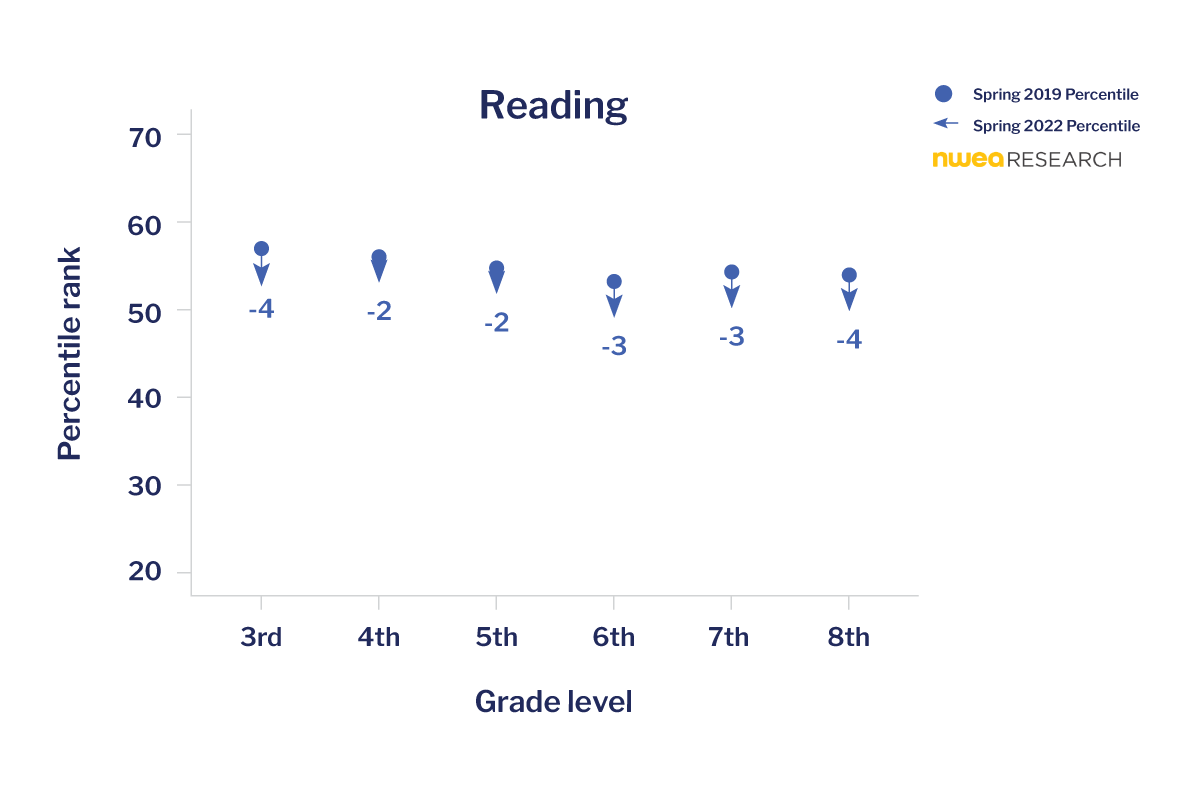

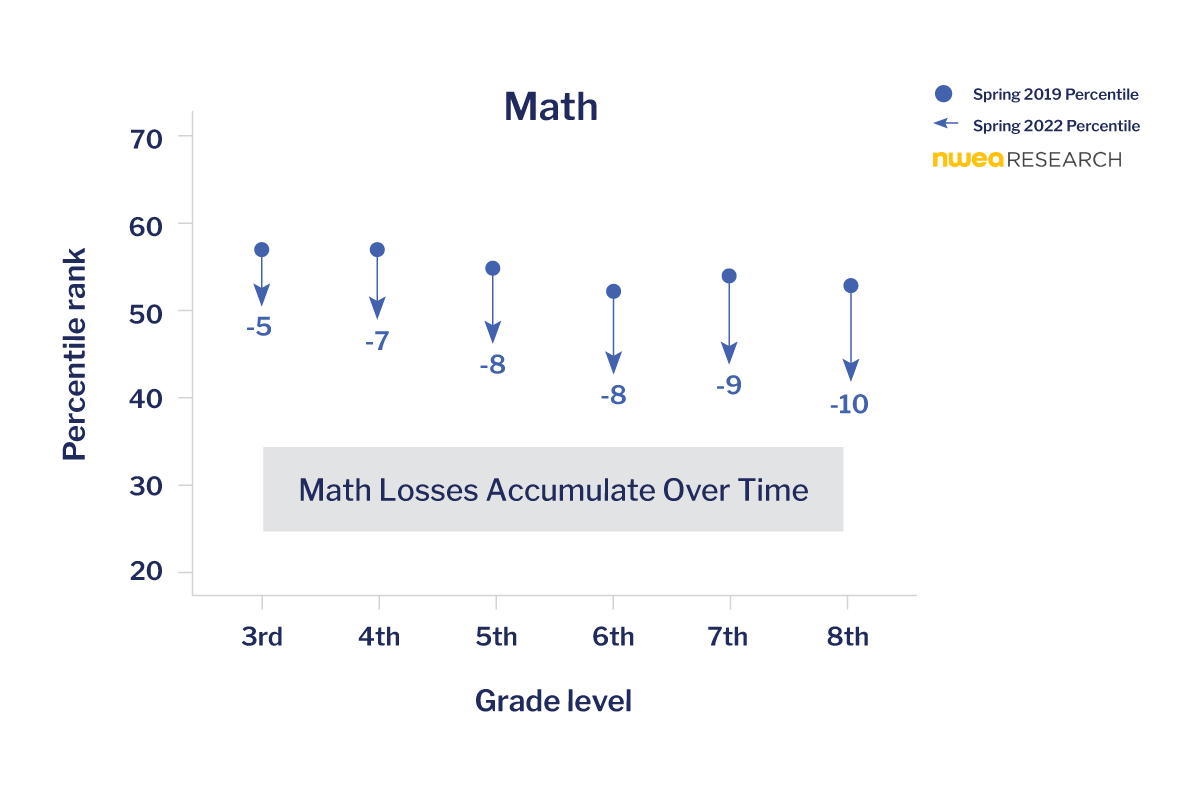

Black and Hispanic students in low income communities dropped even more. They spent 5.5 more weeks in remote instruction than their wealthier peers and suffered 50% more achievement loss. These losses only added to the gaps in achievement that predated the pandemic, which reflect decades of historical inequities.
In response to these challenges, New Classrooms made three key pivots that positioned us for both near-term and long-term impact.
First, we developed Teach to One Roadmaps, an all-digital learning platform that embeds much of the know-how and insights we gathered over the last decade into a flexible, affordable, and easily-adoptable tool. Roadmaps makes learning math more visible and actionable for educators, enabling them to put each of their students on the path to learning recovery and college- and career-readiness. Thousands of students across 15 states are already using Roadmaps to support their acceleration.
Second, we paused on our efforts to implement and expand Teach to One 360 given the challenges many schools had with staffing and basic logistical operations. This also gave us the opportunity to begin designing a new and improved version of the program that can achieve the same or better level of impact — at a far more affordable price point for schools.
Third, we accelerated our policy and advocacy efforts, which aim to create the regulatory space for innovative learning models to emerge. That includes championing federal legislation aimed at funding research and development for creating innovative learning models, establishing partnerships with states looking to advance the adoption of innovative learning models, and serving as national thought leaders through our published reports and ongoing advocacy.
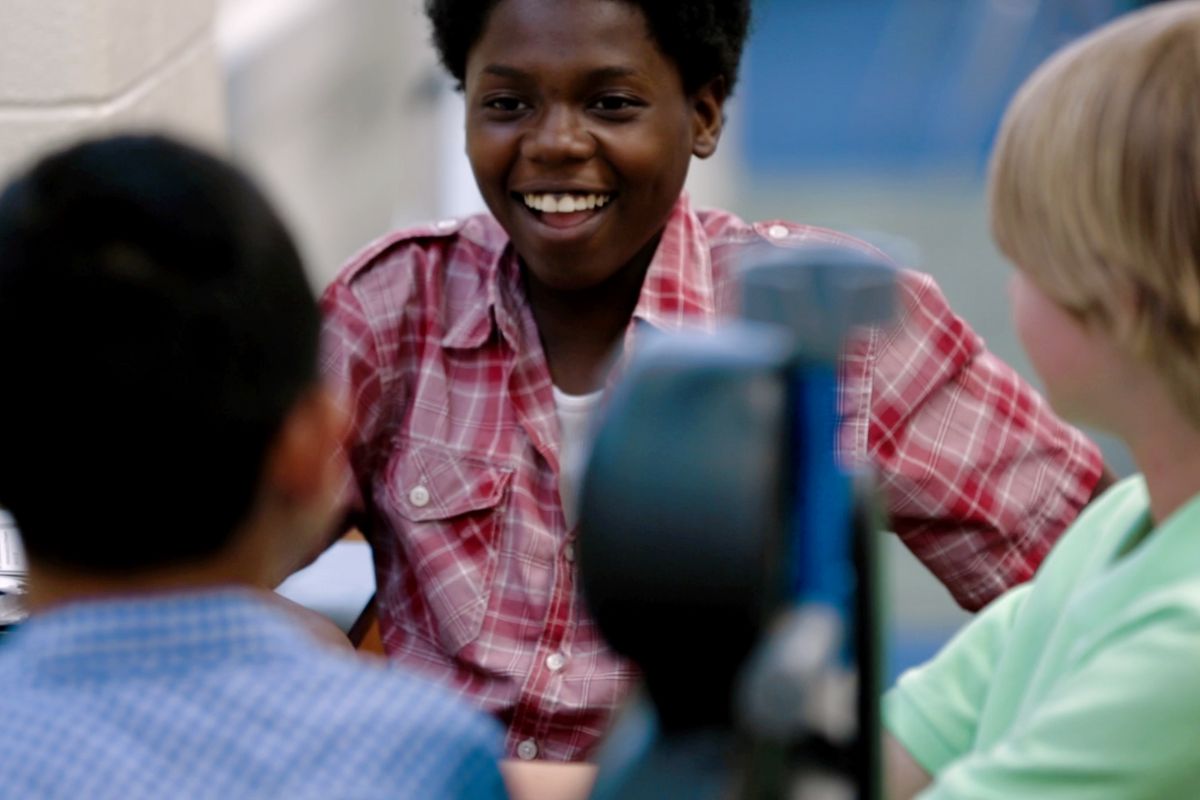

Where We’re Heading
Over the next three years (2023-2025), New Classrooms is focused on achieving the following four objectives:
1
Scale solutions that facilitate learning recovery in math ($22M)
New Classrooms aims to scale Roadmaps to 84,000 students (~250 schools). Making this powerful platform available to as many schools as possible is key for two reasons. First, it will help students recover from the severe math learning losses they experienced. Second, it will begin to help school and systems leaders to understand the value of transitioning away from a one-size-fits-all approach to teaching math, setting the stage for future adoption of Teach to One 360.
Achieving this objective we will require us to:
+
Make continual upgrades to the technology that powers Roadmaps;
+
Implement a thoughtful strategy for scaling; and
+
Launch a third-party evaluation to measure impact.
2
Develop, pilot, and launch an enhanced version of Teach to One 360 ($10M)
New Classrooms will create a more flexible version of our innovative learning model that is easier for schools to implement and results in even more impactful outcomes for students. Our goal is to serve 15,000 students (~50 schools) by 2025.
Achieving this objective we will require us to:
+
Redesign the model in ways that integrate the powerful elements of Roadmaps;
+
Pilot the model in designated schools;
+
Begin to scale the model nationally; and
+
Initiate a third-party evaluation to measure impact.
3
Commit to R&D for transformative impact ($13M)
While students who participated in Teach to One 360 made significant gains (1.5 years of gains in a single school year), that level of success is not enough to fully address today’s challenges. Students are falling multiple years behind, and thus will need even more impactful approaches that truly gives them the opportunity to catch up and get ahead.
The goal of our research and development (R&D) work is to demonstrate a viable way for the vast majority of students to catch up to grade level within three school years — a target that is well within reach. We are confident the unique tools we developed, the know-how we acquired, and datasets we accumulated can be further leveraged in ways that help unlock this new level of performance — both for the students we serve and for the K-12 sector more broadly.
Achieving this objective we will require us to:
+
Build out the requisite organizational infrastructure to enhance our R&D capacity;
+
Surface new insights and solutions;
+
Turn those insights into tools, features, and approaches that can be piloted;
+
Rigorously measure student outcomes; and
+
Share generalizable learnings with the broader K-12 field.
4
Shift the K-12 policy landscape to enable the widespread adoption of innovative learning models for all students ($4M)
New Classrooms’ policy and advocacy work has gained momentum that we will build on to further shift the broader K-12 ecosystem towards innovative learning models. Our policy efforts are focused on: 1) removing policy barriers, 2) promoting policies that accelerate the adoption of innovative learning models, and 3) encouraging schools and districts to incorporate innovative learning models into their broader K-12 strategy.
Achieving this objective we will require us to:
+
Advocate for legislation that advances R&D required to create innovative learning models;
+
Partner with select states to support the creation of Innovation Zones that center on the adoption of innovative learning models; and
+
Provide the thought leadership required to catalyze the model provider market.
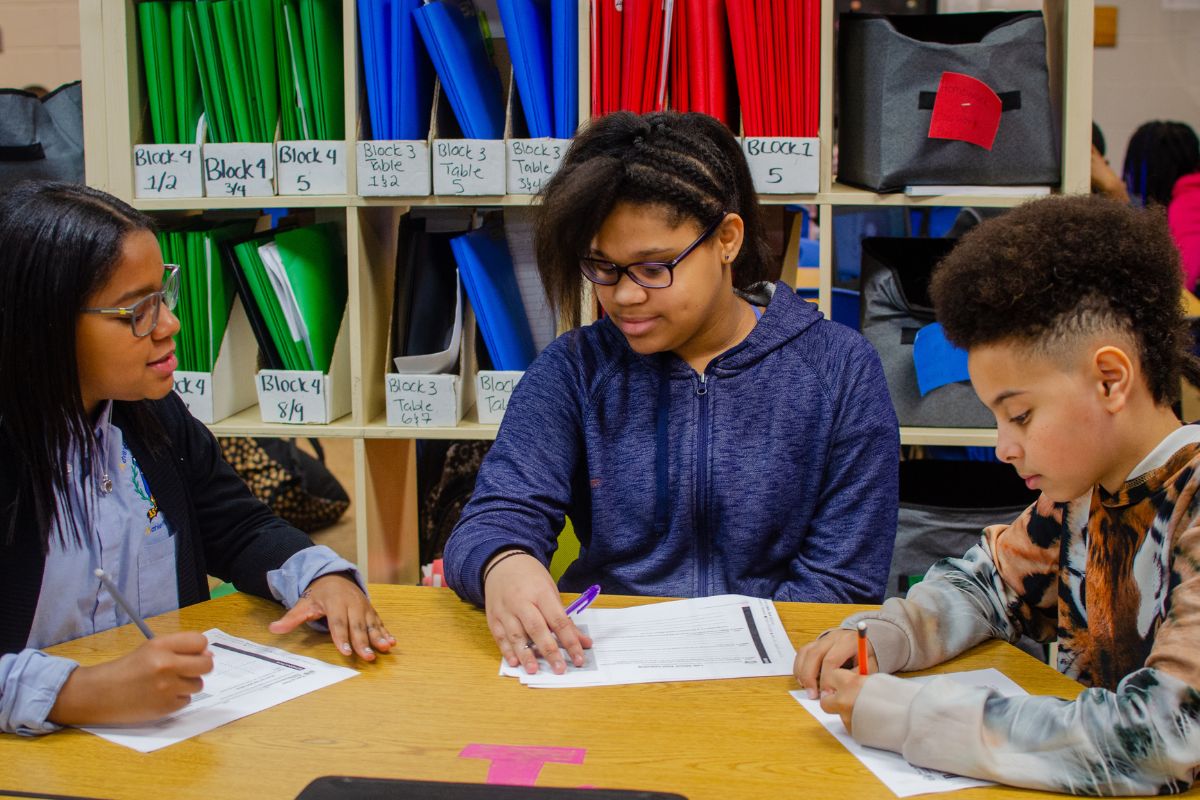

Join Us
New Classrooms spent the last decade working to create a more equitable approach to learning that breaks free of the one-size-fits-all paradigm. The profound disruptions caused by the pandemic have both heightened our urgency and deepened our resolve to turn the page on one-size-fits-all learning.
We believe the next few years provide a unique window to reshape the future of schooling, and seek like-minded donors who share in this vision.